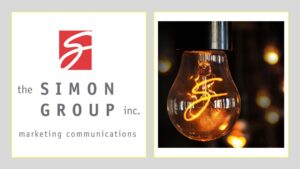Blog
- 18/05/2022
Visual Content Really Matters
In today’s information overload, communicating your company’s unique value may be a hard sell, as multiple inputs interfere with gaining your target audience’s attention in the fast-paced digital world. Getting your message through all the noise can be a challenge, and a carefully crafted document won’t mean a thing if everyone continues to rush past your content. Visual elements are your showstoppers!
Integrate Visual Design into Your Brand
While we all know how important it is to maintain the integrity of your logo’s look across different platforms, communications and marketing materials, that doesn’t mean you are limited to a rigid, by-the-book usage of your branding elements. In fact, a good brand style guide will provide you ways to bring out your brand’s feel, whether that be in terms of color schemes, fonts, textures and shapes as well as overall styles and themes.
And it can be done subtly enough that the connection to the familiar and relatable elements of your brand is carried along with the customer or prospect to evoke an emotion or response.
Reading information gives you a certain depth and understanding. Graphics and visuals give you immediate context and concrete framing.
How Visuals Help Your Marketing
Just like the content you create for your marketing programs, the visual elements should support the goals you set and align with the content you are creating. Are you looking to educate upon first glance, as in charts and graphs? Is there humor that can act as a catalyst to engaging your audience? Or should the visual elements impart a certain tone or emotional appeal? Whatever it is, it’s important to recognize that imagery conveys concepts differently.
You need to understand what is visually appealing to your audience, not just in the images themselves, but in the tone they set. For example, will a humorous image be well received if the message is too technical or sensitive in nature? Conversely, are you playing it too safe when there is an opportunity to throw something out of the ordinary into your graphics scheme to really grab attention?
The creative path you choose for your imagery should also be based on the research and concepts you have evaluated for the overall campaign or program.
Know the Nuances of Your Audience
Factor in not only the demographics of your audience, but their frame of reference as well. Many of our industrial marketing clients have a cross segment of an older, more veteran workforce that has been around the block as well as an incoming segment of younger, more digitally-enabled clients.
Social media and websites enable dynamic ways to visually appeal to multiple audiences at a lower cost than more formal marketing materials. If you gauge your audience properly, you will uncover ways to speak to each segment without alienating the others.
Other clients choose to stay the course on the visual front and select images and visual concepts that appeal strictly to the business case. This can also be done effectively, as long as the message matches the graphics. Again, it comes down to the visuals supporting the goal of your marketing efforts.
What Makes a Good Visual?
Whether it is a video, still image, gif, icon or technical representation of your marketing materials, make sure you make the visual portion of your marketing campaign as strong as your content.
Think about different formats and how elements will translate across different mediums. Think about what story the visuals represent and if that supports the message you are trying to get across. Think about how the images will be received and if they provide a path forward for your viewer, making them want to learn more about what you are offering.
Here are a few more tips to keep in mind when developing the visual concepts for your next marketing outreach.
- Cross-function Utilization
Make sure your visual concept translates across different platforms. You want things to be cohesive and identifiable, so keep in mind where you will need to use these elements.
- Ensure Quality
Look to a professional graphic design team that will make your visuals look cohesive and polished. It goes without saying, but high resolution is key, and avoid blurry, distorted or off-center images.
- Proper Representation
Watch for copyright issues and use images from professionally-sourced outlets, if they are not your own. Get proper permissions from clients and partners, too.
- Repurpose with Purpose
If you’re running a campaign for a longer period of time, it’s time to consider an update for the main elements to avoid viewer fatigue.
- Represent Your Values
The visuals you put forth should represent the values of the company. In today’s meme-heavy age of tongue-in-cheek, know where the line is and stay on the correct side of it.
At the end of the day, the visual elements you incorporate into your campaign help serve as a guide for the viewer, giving them a quick frame of reference and forcing them to stop and take notice of what you are communicating. Visual content matters and plays a key role in any solid and successful marketing campaign.